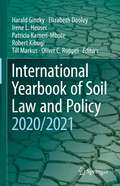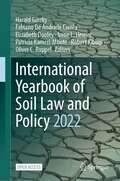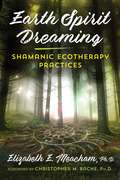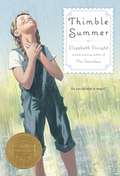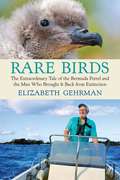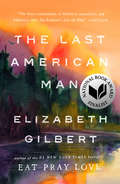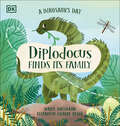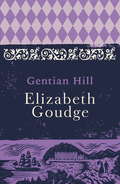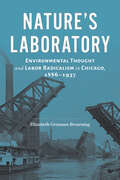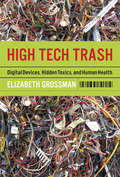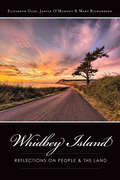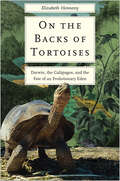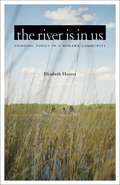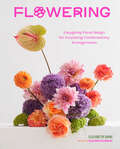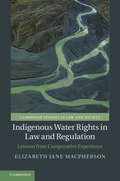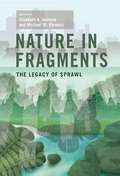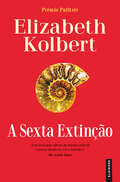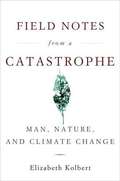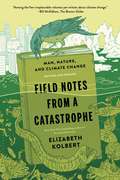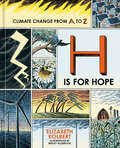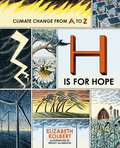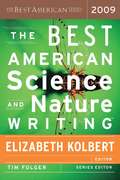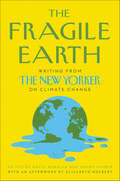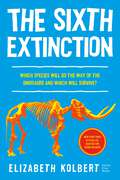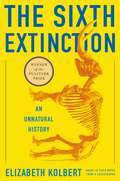- Table View
- List View
International Yearbook of Soil Law and Policy 2020/2021 (International Yearbook of Soil Law and Policy #2020)
by Harald Ginzky Irene L. Heuser Oliver C. Ruppel Elizabeth Dooley Till Markus Robert Kibugi Patricia Kameri-MboteThis book presents an important discussion on land tenure rights for the effective implementation of sustainable soil management provisions. It investigates a variety of aspects, such as the clash of modern and traditional tenure concepts, forms of illegal or illegitimate land acquisition, and the preconditions for legal and legitimate investments. In addition, the book analyses the challenges to ensuring secure land tenure rights in Africa and in Germany. Lastly, it provides information on the role of women in this context.This fifth volume of the International Yearbook of Soil Law and Policy is divided into four parts, the first of which deals with various aspects of the theme “Land Tenure Rights and Sustainable Soil Management”. The second part covers recent international developments, the third part presents regional and national reports, and the fourth discusses overarching issues. Given the range of key topics covered, the book offers an indispensable tool for all academics, legislators and policymakers working in this field.The “International Yearbook of Soil Law and Policy” series discusses central questions in law and politics with regard to the protection and sustainable management of soil and land – at the international, national, and regional level.
International Yearbook of Soil Law and Policy 2022 (International Yearbook of Soil Law and Policy #2022)
by Harald Ginzky Irene L. Heuser Oliver C. Ruppel Elizabeth Dooley Robert Kibugi Patricia Kameri-Mbote Fabiano De Andrade CorrêaThis open access book presents an important discussion on the interface between sustainable soil management and climate mitigation and adaptation. It investigates a variety of aspects in this context, such as the political and societal consequences for countries in the Global South, an assessment of the outcomes of the UNFCCC Conference of Parties held in Glasgow, appropriate legal instruments to promote desealing, regulatory concepts for negative emissions in soil and land use, the debate in Europe on carbon uptake in soils and the climate-related policy of the Convention on Biological Diversity. Lastly, it provides information on recent court rulings on climate mitigation in Germany and Australia and their relevance for sustainable soil management.This sixth volume of the International Yearbook of Soil Law and Policy is divided into four parts, the first of which deals with various aspects of the theme “Climate Mitigation and Adaptation and Sustainable Soil Management.”The second part covers recent international developments, the third presents regional and national reports, and the fourth discusses overarching issues. Given the range of key topics covered, the book offers an indispensable tool for all academics, legislators and policymakers working in this field. The “International Yearbook of Soil Law and Policy” series discusses central questions in law and politics with regard to the protection and sustainable management of soil and land – at the international, national, and regional level.
Earth Spirit Dreaming: Shamanic Ecotherapy Practices
by Elizabeth E. MeachamA guide to co-creating a healing vision for humanity and the Earth through nature-connected shamanic rituals • Explains the Earth Spirit Dreaming process for rebirthing inherent shamanic abilities with dozens of practices in three categories: Earth-connecting practices, Spirit-connecting practices, and Dream-connecting practices • Provides experiential exercises to foster interactions with the intelligences and elemental energies of nature and the Spirit realm, realign you with the rhythms and flow of life, and co-create a healing dream for humanity and all of life on our planet • Contains step-by-step directions for connecting with the light guides of the planet for guidance and healing Humanity has become profoundly disconnected from the web of life on Earth as well as from nature as a whole. In this practical guide, Elizabeth E. Meacham details her field-tested method of shamanic ecotherapy practices to resolve this centuries-long trend toward disconnection. Through these practices, you will learn how to reconnect to Earth&’s systems and help restore health and balance to people and the planet. Translating transformative ideas from visionary environmental thinkers into engaging shamanic rituals for profound spiritual growth, Meacham offers dozens of practices in three categories: Earth-connecting practices, Spirit-connecting practices, and Dream-connecting practices. Building on one another, the exercises open channels to allow you to directly experience the intelligences of the Earth and Spirit realms, rebirth your inherent shamanic abilities, realign you with the rhythms and flow of life, and reclaim your ancestral power for co-creating a healing dream for our species and all of life on our planetary home. Guiding the reader through a progressively deepening journey toward connection with ourselves, each other, and the consciousness of our biosphere, the practices also invite profound mindfulness, as we work to hold a vision of connection with the Earth and Spirit realms, while choosing consciously to focus on joy, beauty, gratitude, love, and healing. Illuminating a shamanic awakening within Western culture at the dawn of an ecological age, Earth Spirit Dreaming reveals how the birth of a global consciousness of healing depends upon our commitment to individual and collective spiritual evolution. Calling us back to our shamanic heritage of a living nature spirituality, this manual offers much needed guidance on the essential journey back to an intimate love of Earth.
Thimble Summer
by Elizabeth EnrightA few hours after nine-year-old Garnet Linden finds a silver thimble in the dried-up riverbed, the rains come and end the long drought on the farm. The rains bring safety for the crops and the livestock, and money for Garnet's father. Garnet can't help feeling that the thimble is a magic talisman, for the summer proves to be interesting and exciting in so many different ways. <P><P>There is the arrival of Eric, an orphan who becomes a member of the Linden family; the building of a new barn; and the county fair at which Garnet's carefully tended pig, Timmy, wins a blue ribbon. Every day brings adventure of some kind to Garnet and her best friend, Citronella. As far as Garnet is concerned, the thimble is responsible for each good thing that happens during this magic summer--her thimble summer.
Rare Birds: The Extraordinary Tale of the Bermuda Petrel and the Man Who Brought It Back from Extinction
by Elizabeth GehrmanThe inspiring story of David Wingate, a living legend among birders, who brought the Bermuda petrel back from presumed extinction David Wingate is known in Bermuda as the birdman and in the international conservation community as a living legend for single-handedly bringing back the cahow, or Bermuda petrel—a seabird that flies up to 82,000 miles a year, drinking seawater and sleeping on the wing. For millennia, the birds came ashore every November to breed on this tiny North Atlantic island. But less than a decade after Bermuda’s 1612 settlement, the cahows had vanished. Or so it was thought until the early 1900s, when tantalizing hints of their continued existence began to emerge. In 1951, two scientists invited fifteen-year-old Wingate along on a bare-bones expedition to find the bird. The team stunned the world by locating seven nesting pairs, and Wingate knew his life had changed forever. He would spend the next fifty years battling natural and man-made disasters, bureaucracy, and personal tragedy with single-minded devotion and antiestablishment outspokenness. In April 2009, Wingate saw his dream fulfilled, as the birds returned to Nonsuch, an island habitat that he had hand-restored, plant-by-plant, giving the Bermuda petrels the chance they needed in their centuries-long fight for survival.
The Last American Man
by Elizabeth Gilbert<P>In this rousing examination of contemporary American male identity, acclaimed author and journalist Elizabeth Gilbert explores the fascinating true story of Eustace Conway. <P>In 1977, at the age of seventeen, Conway left his family's comfortable suburban home to move to the Appalachian Mountains. <P>For more than two decades he has lived there, making fire with sticks, wearing skins from animals he has trapped, and trying to convince Americans to give up their materialistic lifestyles and return with him back to nature. <P>To Gilbert, Conway's mythical character challenges all our assumptions about what it is to be a modern man in America; he is a symbol of much we feel how our men should be, but rarely are. <P><b>Finalist for the National Book Award 2002</b>
A Dinosaur's Day: Diplodocus Finds Its Family
by Elizabeth Gilbert BediaEmbark on a prehistoric journey with this board book of fun stories and incredible facts about dinosaurs.Introducing A Dinosaur&’s Day: Diplodocus Finds Its Family - a story time adventure that teaches kids exciting facts about dinosaurs. Go on an adventure with a baby diplodocus as it dodges predators, seeks out yummy plants to eat, and follows its family.Packed with beautiful pictures and compelling facts, this dinosaur book can help children aged 3-5 to learn about the diplodocus species through images, pronunciation guides, and amazing facts and figures. Little dinosaur lovers can join Diplodocus on a quest to find its family in the mighty Jurassic world.A Dinosaur&’s Day: Diplodocus Finds Its Family…- Helps children learn about dinosaurs in this beautiful picture book format- Teaches readers dinosaur facts and behavior in a very natural way- Includes a non-fiction section about the dinosaur species following the story - Features bright, colorful pages with an engaging narrative- Has clear and fun text to help children learn and engage easilyTeach children about different prehistoric species in this educational dinosaur book through a fun and engaging story and vibrant images. This fantastic dinosaur interactive book is perfect for pre-reading toddlers, and children just learning to read. Little ones can enjoy the spectacular scenery in the Jurassic world along the way, as Diplodocus camouflages, explores, and munches on plants.
Gentian Hill
by Elizabeth GoudgeUnable to bear the prospect of a life at sea, young Anthony O'Connell deserts his ship at Torquay and escapes into the Devonshire countryside under a new name. When Stella Sprigg, adopted daughter of a local farmer, encounters 'Zachary', the pair instantly know they are destined to be together. Intertwined with the local legend of St. Michael's Chapel, Stella and Zachary's story takes them from the secluded Devonshire valley to the perilous Mediterranean seas and finally to the poverty and squalor of eighteenth-century London.
Nature's Laboratory: Environmental Thought and Labor Radicalism in Chicago, 1886–1937
by Elizabeth Grennan BrowningThe untold history of how Chicago served as an important site of innovation in environmental thought as America transitioned to modern, industrial capitalism.In Nature's Laboratory, Elizabeth Grennan Browning argues that Chicago—a city characterized by rapid growth, severe labor unrest, and its position as a gateway to the West—offers the clearest lens for analyzing the history of the intellectual divide between countryside and city in the United States at the end of the nineteenth century. By examining both the material and intellectual underpinnings of Gilded Age and Progressive Era environmental theories, Browning shows how Chicago served as an urban laboratory where public intellectuals and industrial workers experimented with various strains of environmental thinking to resolve conflicts between capital and labor, between citizens and their governments, and between immigrants and long-term residents. Chicago, she argues, became the taproot of two intellectual strands of American environmentalism, both emerging in the late nineteenth century: first, the conservation movement and the discipline of ecology; and second, the sociological and anthropological study of human societies as "natural" communities where human behavior was shaped in part by environmental conditions. Integrating environmental, labor, and intellectual history, Nature's Laboratory turns to the workplace to explore the surprising ways in which the natural environment and ideas about nature made their way into factories and offices—places that appeared the most removed from the natural world within the modernizing city. As industrialization, urbanization, and immigration transformed Chicago into a microcosm of the nation's transition to modern, industrial capitalism, environmental thought became a protean tool that everyone from anarchists and industrial workers to social scientists and business managers looked to in order to stake their claims within the democratic capitalist order. Across political and class divides, Chicagoans puzzled over what relationship the city should have with nature in order to advance as a modern nation. Browning shows how historical understandings of the complex interconnections between human nature and the natural world both reinforced and empowered resistance against the stratification of social and political power in the city.
High Tech Trash: Digital Devices, Hidden Toxics, and Human Health
by Elizabeth GrossmanThe Digital Age was expected to usher in an era of clean production, an alternative to smokestack industries and their pollutants. But as environmental journalist Elizabeth Grossman reveals in this penetrating analysis of high tech manufacture and disposal, digital may be sleek, but it's anything but clean. Deep within every electronic device lie toxic materials that make up the bits and bytes, a complex thicket of lead, mercury, cadmium, plastics, and a host of other often harmful ingredients.High Tech Trash is a wake-up call to the importance of the e-waste issue and the health hazards involved. Americans alone own more than two billion pieces of high tech electronics and discard five to seven million tons each year. As a result, electronic waste already makes up more than two-thirds of the heavy metals and 40 percent of the lead found in our landfills. But the problem goes far beyond American shores, most tragically to the cities in China and India where shiploads of discarded electronics arrive daily. There, they are "recycled"-picked apart by hand, exposing thousands of workers and community residents to toxics.As Grossman notes, "This is a story in which we all play a part, whether we know it or not. If you sit at a desk in an office, talk to friends on your cell phone, watch television, listen to music on headphones, are a child in Guangdong, or a native of the Arctic, you are part of this story."The answers lie in changing how we design, manufacture, and dispose of high tech electronics. Europe has led the way in regulating materials used in electronic devices and in e-waste recycling. But in the United States many have yet to recognize the persistent human health and environmental effects of the toxics in high tech devices. If Silent Spring brought national attention to the dangers of DDT and other pesticides, High Tech Trash could do the same for a new generation of technology's products.
Whidbey Island: Reflections on People & the Land
by Mary Richardson Elizabeth Guss Janice O'MahonyFor generations, Whidbey Island's vivid beauty has made it a home for those drawn in by a rural landscape and thriving communities. Whether native tribes, pioneers, vacationers or retirees, all have enjoyed the island's legacy. Their stories illustrate Whidbey Island residents' devotion to their home. Authors Elizabeth Guss, Janice O'Mahony and Mary Richardson offer a compelling anthology that captures the history behind the intentional protection and restoration of natural and cultural areas on the island. Each story sheds new light on Whidbey Island's rich heritage. From the early settlements of Native Americans and Europeans, to federal involvement with the Civilian Conservation Corps and the U.S. Navy, continuing through the activism in the 1960s and 1970s, to today, this is the story of Whidbey Island.
On the Backs of Tortoises: Darwin, the Galapagos, and the Fate of an Evolutionary Eden
by Elizabeth HennessyAn insightful exploration of the iconic Galápagos tortoises, and how their fate is inextricably linked to our own in a rapidly changing world. Finalist for the 2020 E.O. Wilson Literary Science Writing Award, sponsored by PEN America Literary Awards The Galápagos archipelago is often viewed as a last foothold of pristine nature. For sixty years, conservationists have worked to restore this evolutionary Eden after centuries of exploitation at the hands of pirates, whalers, and island settlers. This book tells the story of the islands&’ namesakes—the giant tortoises—as coveted food sources, objects of natural history, and famous icons of conservation and tourism. By doing so, it brings into stark relief the paradoxical, and impossible, goal of conserving species by trying to restore a past state of prehistoric evolution. The tortoises, Elizabeth Hennessy demonstrates, are not prehistoric, but rather microcosms whose stories show how deeply human and nonhuman life are entangled. In a world where evolution is thoroughly shaped by global history, Hennessy puts forward a vision for conservation based on reckoning with the past, rather than trying to erase it. &“Fresh, insightful . . . Hennessy&’s melding of human and natural history makes for thought-provoking reading.&” —Booklist (starred review) &“Gripping . . . well-researched and thought-provoking . . . whether you&’re well-versed in the intricacies of conservation or have only just begun to long for a look at the tortoises yourself. On the Backs of Tortoises is a natural history that asks important questions, and challenges us to think about how best to answer them.&” —Genevieve Valentine, NPR &“Wonderfully interesting, informative, and engaging, as well as scholarly.&” —Janet Browne, author of Charles Darwin: Voyaging and Charles Darwin: The Power of Place
The River Is in Us: Fighting Toxics in a Mohawk Community
by Elizabeth HooverWinner of the Labriola Center American Indian National Book Award 2017 Mohawk midwife Katsi Cook lives in Akwesasne, an indigenous community in upstate New York that is downwind and downstream from three Superfund sites. For years she witnessed elevated rates of miscarriages, birth defects, and cancer in her town, ultimately drawing connections between environmental contamination and these maladies. When she brought her findings to environmental health researchers, Cook sparked the United States&’ first large-scale community-based participatory research project.In The River Is in Us, author Elizabeth Hoover takes us deep into this remarkable community that has partnered with scientists and developed grassroots programs to fight the contamination of its lands and reclaim its health and culture. Through in-depth research into archives, newspapers, and public meetings, as well as numerous interviews with community members and scientists, Hoover shows the exact efforts taken by Akwesasne&’s massive research project and the grassroots efforts to preserve the Native culture and lands. She also documents how contaminants have altered tribal life, including changes to the Mohawk fishing culture and the rise of diabetes in Akwesasne.Featuring community members such as farmers, health-care providers, area leaders, and environmental specialists, while rigorously evaluating the efficacy of tribal efforts to preserve its culture and protect its health, The River Is in Us offers important lessons for improving environmental health research and health care, plus detailed insights into the struggles and methods of indigenous groups. This moving, uplifting book is an essential read for anyone interested in Native Americans, social justice, and the pollutants contaminating our food, water, and bodies.
Flowering: Easygoing Floral Design for Surprising Contemporary Arrangements
by Elizabeth JaimeA fresh, contemporary flower-arranging book from the Miami-based studio Calma Floral, with foundational tips, flower recipes, and bountiful photography that will teach you how to create irreverent arrangements for any occasion.Heralding a new era in floral design—one that favors a playful, modern aesthetic and a laidback approach—this guide to creating trend-forward flower arrangements invites you to think outside the box. Learn how to arrange unique, eye-catching bouquets by pairing unexpected combinations and incorporating a variety of elements and textures, such as fresh and dried blooms, rhinestones, fruit, and tropical foliage.Foundational tips for "flowering" set you up for success, and twenty step-by-step recipes (paired with step-by-step photos!) make it easy to design joy-filled floral moments—from a whimsical fountain of troll grass to a mossy mounded centerpiece, a Rococo-inspired piece worthy of Versailles, a suspended cloud of fluffy mimosa, and so much more. A must-have for hobbyists and experienced florists looking for something fresh, Flowering is the essential floral book for today.ONE-OF-A-KIND PIECES: With categories that include 360 Arrangements, Bud Vases + Tiny Arrangements, Party Time Flowers, Installations + Home Decor, and more, this book offers a wide range of flower design ideas. You'll find a piece for every occasion, whether you're looking for a bright bouquet of reflexed roses to gift to a friend, a table runner of carnations and candles for a dinner party, or an installation of dried palms to hang in your entryway.ALL-LEVEL DESIGNS: Flowering is perfect for weekend dabblers and professionals alike: Hobbyists and amateur designers will appreciate the informal tone, approachable how-tos, and step-by-step photography, which make creating these striking bouquets and arrangements easy and fun. Experienced florists will be inspired to try something new and different thanks to the book's creative inspirations.ON-TREND AESTHETIC: In a vibrant, colorful package, Flowering makes a fun gift alongside a vase, a candle, or an anthurium plant. Inspired by Calma Floral's youthful brand design, this trend-forward book is a must-have resource for millennials and Gen-Zers who like to have fun with flowers.FLOWER BOOK FOR A MODERN AUDIENCE: With a relaxed approach and chic style, Flowering is a refreshing update to the classic tomes on flower arrangement. Diverging from the tried and true, these 20 arrangements eschew tradition and make a bold statement with sculptural shapes and unique materials. Anyone eager for a new, exciting take on floral design will find it here!Perfect for:Hobbyists and weekend dabblers who want to have fun with flowersFlorists and floral designers looking for new inspiration and a fresh aestheticFans of the modern arrangements designed by Calma Floral, Bloom and Plume, and Under New MgmtShoppers looking for a Mother's Day, birthday, anniversary, or engagement gift
Indigenous Water Rights in Law and Regulation: Lessons from Comparative Experience (Cambridge Studies in Law and Society)
by Elizabeth Jane MacphersonIndigenous Water Rights in Law and Regulation responds to an unresolved question in legal scholarship: how are (or how might be) indigenous peoples' rights included in contemporary regulatory regimes for water. This book considers that question in the context of two key trajectories of comparative water law and policy. First, the tendency to 'commoditise' the natural environment and use private property rights and market mechanisms in water regulation. Second, the tendency of domestic and international courts and legislatures to devise new legal mechanisms for the management and governance of water resources, in particular 'legal person' models. This book adopts a comparative research method to explore opportunities for accommodating indigenous peoples' rights in contemporary water regulation, with country studies in Australia, Aotearoa New Zealand, Chile and Colombia, providing much needed attention to the role of rights and regulation in determining indigenous access to, and involvement with, water in comparative law.
Nature in Fragments: The Legacy of Sprawl (American Museum of Natural History, Center for Biodiversity Conservation, Series on Biodiversity)
by Elizabeth Johnson Michael KlemensThis new collection focuses on the impact of sprawl on biodiversity and the measures that can be taken to alleviate it. Leading biological and social scientists, conservationists, and land-use professionals examine how sprawl affects species and alters natural communities, ecosystems, and natural processes. The contributors integrate biodiversity issues, concerns, and needs into the growing number of anti-sprawl initiatives, including the "smart growth" and "new urbanist" movements.
A Sexta Extinção
by Elizabeth KolbertLeitura recomendada por Yuval Noah Harari, Al Gore, Bill Gates e Barack Obama, A Sexta Extinção é considerado um dos livros de divulgação científica mais importantes dos últimos anos, tendo sido finalista do National Book Critics Award e vencedor do Prémio Pulitzer para obras de não-ficção. Nos últimos 500 milhões de anos, a Terra passou por cinco extinções em massa, nas quais a diversidade da vida no planeta se reduziu drástica e subitamente. Atualmente, e pela primeira vez na História, decorre um processo de extinção em massa provocado por uma única espécie: o Homem. Nos últimos dois séculos, provocámos danos irreparáveis no clima e ecossistema global; como consequência direta, mais de um quarto de todos os mamíferos da Terra está hoje em vias de extinção, tal como acontece com 40% dos anfíbios, um terço dos corais e dos tubarões, um quinto dos répteis e um sexto das aves. Considerado um dos livros de divulgação científica mais relevantes dos últimos anos, A Sexta Extinção é leitura recomendada por personalidades como YuvalNoah Harari, Al Gore, Bill Gates ou Barack Obama. Neste seu valioso trabalho, Elizabeth Kolbert combina os resultados de uma extensa investigação no terreno com a história das ideias e o trabalho de geólogos, botânicos e biólogos marinhos, produzindo um documento inédito e, mais do que isso, um apelo urgente para que, repensando o nosso papel no planeta, não deixemos como derradeiro legado uma sexta extinção. «Um livro maravilhoso e um aviso muito claro de que mudanças repentinas são possíveis de ocorrer. Já aconteceram no passado e podem vir a repetir-se.» Barack Obama «Um livro que altera de forma radical o nosso modo de ver o mundo.» The Seattle Times «As longas viagens que Elizabeth Kolbert realizou durante a pesquisa para este livro e o tratamento detalhado tanto dos factos históricos como dos científicos, fazem de A Sexta Extinção um contributo muito valioso para a compreensão das nossas circunstâncias atuais.» Al Gore, The New York Times Book Review «Kolbert mostra nestas páginas que é capaz de escrever poeticamente sobre os animais em vias de extinção, mas o verdadeiro poder deste livro reside nos factos científicos e no contexto histórico apresentados pela autora, ao documentar as perdas crescentes que o Homem está a provocar.» The New York Times
Field Notes from a Catastrophe: Man, Nature, and Climate Change
by Elizabeth KolbertAn argument for the danger of global warming in a book that is sure to be as influential as Rachel Carson's "Silent Spring," Known for her insightful journalism, "New Yorker" writer Elizabeth now tackles the controversial subject of global warming.
Field Notes from a Catastrophe: Man, Nature, and Climate Change
by Elizabeth KolbertThis description of the realities of global warming is a passionate plea for action whilst there is still time. The author approaches global warming from all angles, visiting the Artic, the North of England, Holland and Puerto Rico, interviewing researchers and environmentalists and explaining the science and the studies.
H Is for Hope: Climate Change from A to Z
by Elizabeth KolbertIn twenty-six essays—one for each letter of the alphabet—the Pulitzer Prize-winning author of The Sixth Extinction takes us on a hauntingly illustrated journey through the history of climate change and the uncertainties of our future.Climate change resists narrative—and yet some account of what&’s happening is needed. Millions of lives are at stake, and upward of a million species. And there are decisions to be made, even though it&’s unclear who, exactly, will make them.In H Is for Hope, Elizabeth Kolbert investigates the landscape of climate change—from &“A&”, for Svante Arrhenius, who created the world&’s first climate model in 1894, to &“Z&”, for the Colorado River Basin, ground zero for climate change in the United States. Along the way she looks at Greta Thunburg&’s &“blah blah blah&” speech (&“B&”), learns to fly an all-electric plane (&“E&”), experiments with the effects of extreme temperatures on the human body (&“T&”), and struggles with the deep uncertainty of the future of climate change (&“U&”).Adapted from essays originally published in The New Yorker and beautifully illustrated by Wesley Allsbrook, H Is for Hope is simultaneously inspiring, alarming, and darkly humorous—a unique examination of our changing world.
H is for Hope: Climate Change from A to Z
by Elizabeth KolbertClimate change resists narrative – and yet we must see clearly what&’s happening in our world. Millions of lives are at stake, and upwards of a million species. We must act. 'To be a well-informed citizen of Planet Earth, you need to read Elizabeth Kolbert.' ROLLING STONE In H is for Hope, Elizabeth Kolbert investigates the history, and future, of climate change – from A, for Svante Arrhenius, who created the world&’s first climate model in 1894, to Z, for Net Zero. Along the way she looks at Greta Thunberg&’s &‘blah blah blah&’ speech, flies an all-electric plane, experiments with the effects of extreme temperatures on the human body, and struggles with the deep uncertainty of the future. Complemented by Wesley Allsbrook&’s gorgeous, colour illustrations, H Is for Hope offers an inspiring, worrying and, above all, hopeful vision for how we can still save our planet.
The Best American Science and Nature Writing 2009
by Elizabeth KolbertElizabeth Kolbert, one of today's leading environmental journalists, edits this year's volume of the finest science and nature writing.
The Fragile Earth: Writing from The New Yorker on Climate Change
by Elizabeth KolbertA New York Times New & Noteworthy BookOne of the Daily Beast’s 5 Essential Books to Read Before the ElectionA collection of the New Yorker’s groundbreaking reporting from the front lines of climate change—including writing from Bill McKibben, Elizabeth Kolbert, Ian Frazier, Kathryn Schulz, and moreJust one year after climatologist James Hansen first came before a Senate committee and testified that the Earth was now warmer than it had ever been in recorded history, thanks to humankind’s heedless consumption of fossil fuels, New Yorker writer Bill McKibben published a deeply reported and considered piece on climate change and what it could mean for the planet. At the time, the piece was to some speculative to the point of alarmist; read now, McKibben’s work is heroically prescient. Since then, the New Yorker has devoted enormous attention to climate change, describing the causes of the crisis, the political and ecological conditions we now find ourselves in, and the scenarios and solutions we face. The Fragile Earth tells the story of climate change—its past, present, and future—taking readers from Greenland to the Great Plains, and into both laboratories and rain forests. It features some of the best writing on global warming from the last three decades, including Bill McKibben’s seminal essay “The End of Nature,” the first piece to popularize both the science and politics of climate change for a general audience, and the Pulitzer Prize–winning work of Elizabeth Kolbert, as well as Kathryn Schulz, Dexter Filkins, Jonathan Franzen, Ian Frazier, Eric Klinenberg, and others. The result, in its range, depth, and passion, promises to bring light, and sometimes heat, to the great emergency of our age.
The Sixth Extinction (young readers adaptation): An Unnatural History
by Elizabeth KolbertIn this young readers adaptation of the New York Times-bestselling, Pulitzer Prize-winning The Sixth Extinction, Elizabeth Kolbert tells us why and how human beings have altered life on the planet in a way no species has before. Over the last half-billion years, there have been five mass extinctions, when the diversity of life on earth suddenly and dramatically contracted. Scientists around the world are monitoring the sixth extinction, predicted to be the most devastating extinction event since the asteroid impact that wiped out the dinosaurs. Adapting from her New York Times-bestselling, Pulitzer Prize-winning adult nonfiction, Elizabeth Kolbert explores how humans are altering life on Earth.
The Sixth Extinction: An Unnatural History
by Elizabeth KolbertA major book about the future of the world, blending intellectual and natural history and field reporting into a powerful account of the mass extinction unfolding before our eyes.<p><p> Over the last half a billion years, there have been five mass extinctions, when the diversity of life on earth suddenly and dramatically contracted. Scientists around the world are currently monitoring the sixth extinction, predicted to be the most devastating extinction event since the asteroid impact that wiped out the dinosaurs. This time around, the cataclysm is us. <p> In The Sixth Extinction, two-time winner of the National Magazine Award and New Yorker writer Elizabeth Kolbert draws on the work of scores of researchers in half a dozen disciplines, accompanying many of them into the field: geologists who study deep ocean cores, botanists who follow the tree line as it climbs up the Andes, marine biologists who dive off the Great Barrier Reef. She introduces us to a dozen species, some already gone, others facing extinction, including the Panamian golden frog, staghorn coral, the great auk, and the Sumatran rhino. <p> Through these stories, Kolbert provides a moving account of the disappearances occurring all around us and traces the evolution of extinction as concept, from its first articulation by Georges Cuvier in revolutionary Paris up through the present day. The sixth extinction is likely to be mankind's most lasting legacy; as Kolbert observes, it compels us to rethink the fundamental question of what it means to be human. <p> Pulitzer Prize Winner
